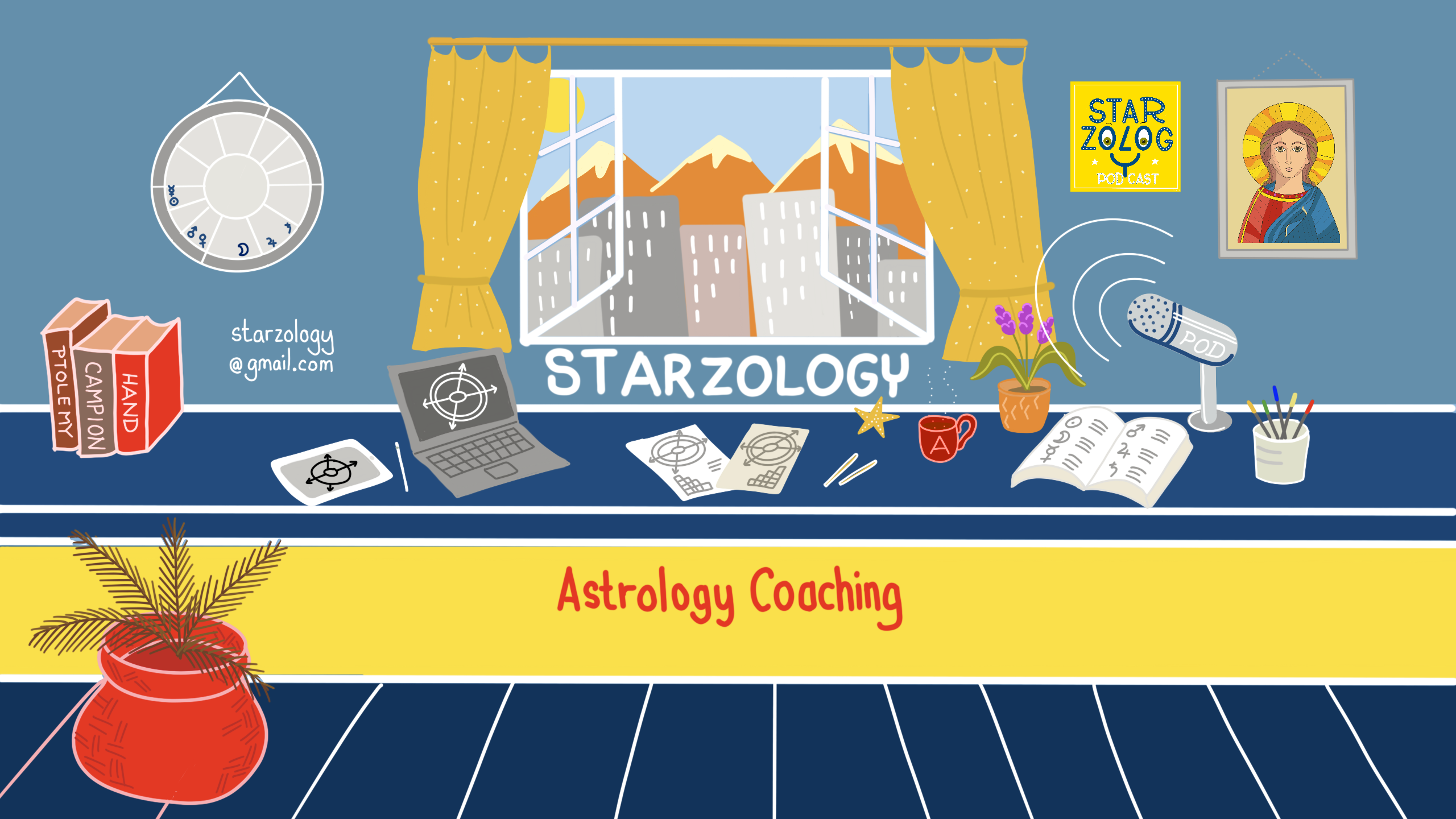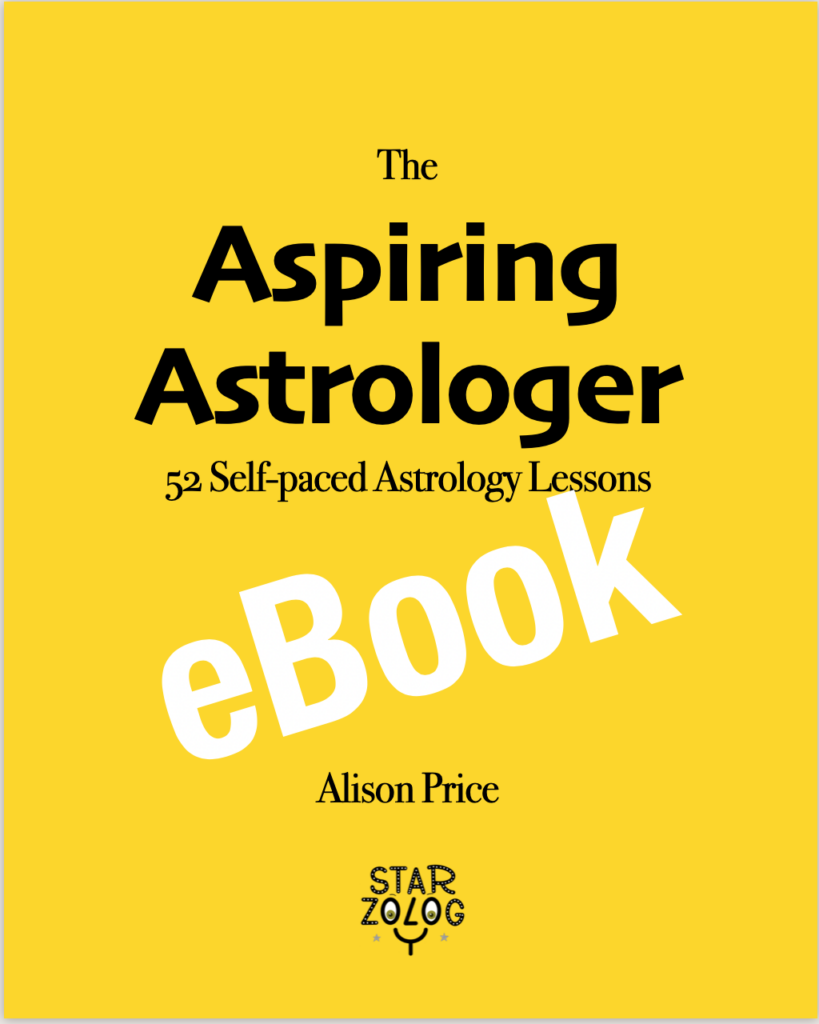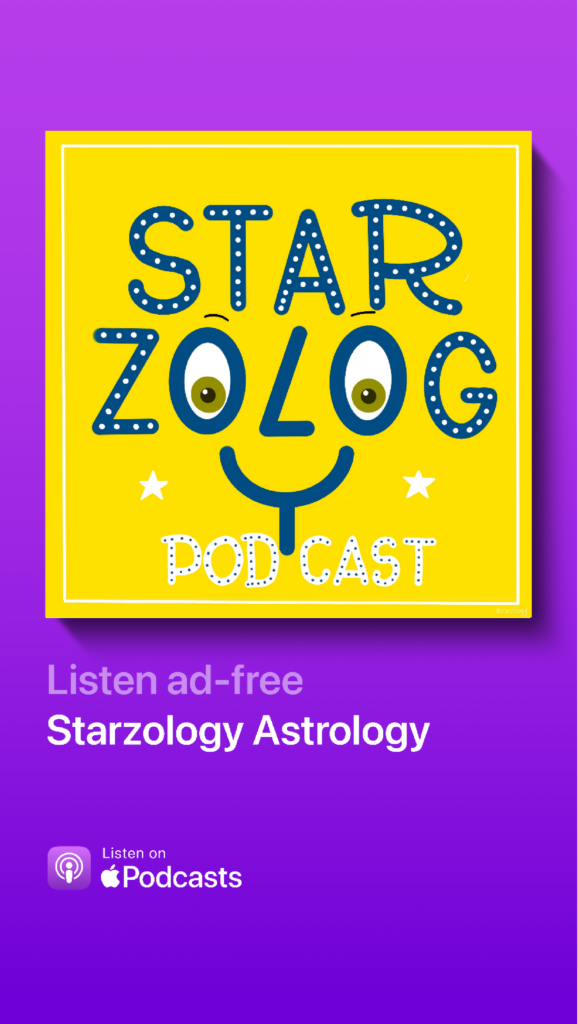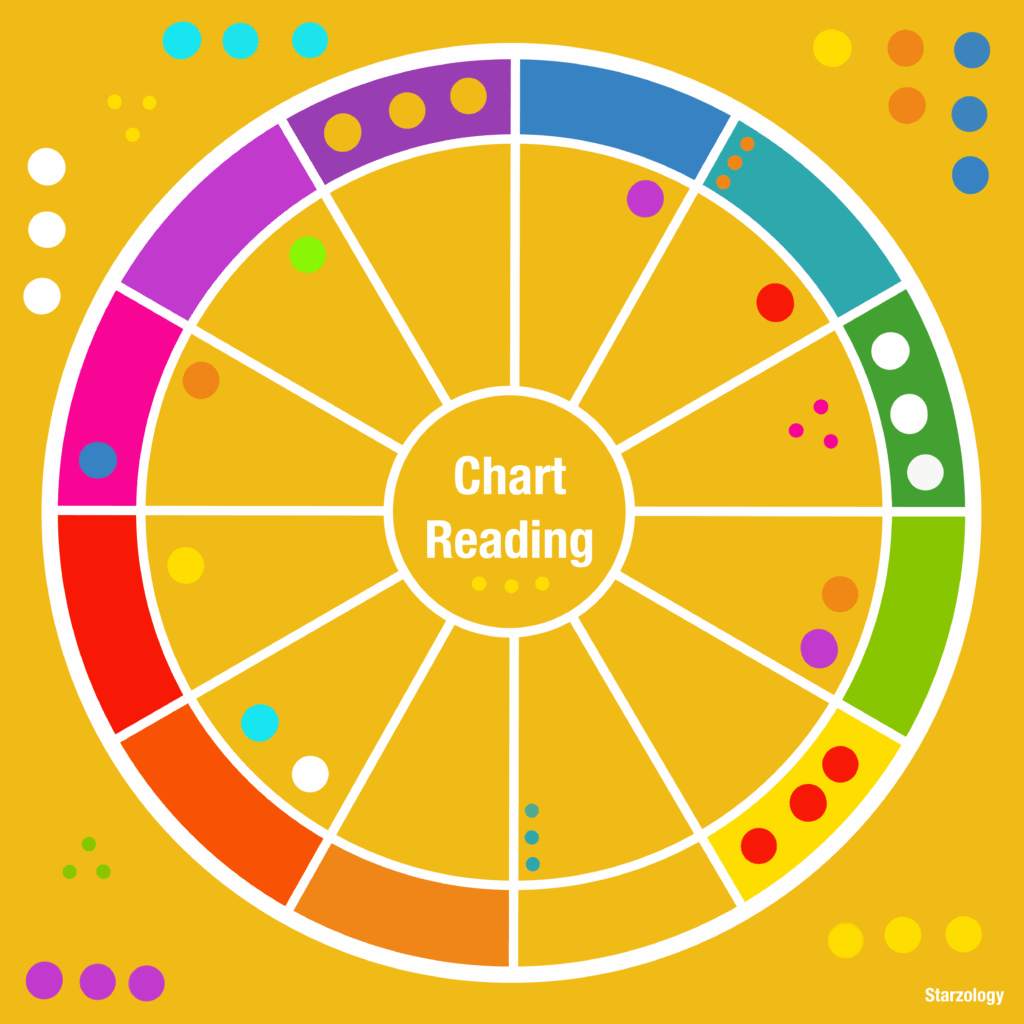Aspects
A Cornerstone of Chart Reading
This is part of the Starzology Astrology Basics series of posts on the four cornerstones for reading a chart. This is what you need to know to read a chart. The other cornerstones are signs, planets, houses and a fifth cornerstone (?) is chart points.
Podcast Episode: Aspects Introduction
In this podcast episode, Alison and Arwynne provide valuable insights into the aspects of your birth chart.
They delve into the specific angles of major, minor and lesser used aspects, discuss the orbs that influence them, and offer real-life examples of how these aspects manifest in actual charts.
Additionally, they offer guidance on where to begin and how to determine which aspects hold significance in your natal chart.
Introduction to Aspects
Aspects are the angular correspondences formed between planets, angles and other points in a chart.
They are measured in degrees and minutes of longitude in the signs.
Aspects are a function of simple geometry.
- Every planet will usually have some aspects.
- Not all charts will contain all the different aspects.
- It is unlikely that all planets will have every aspect.
- Not all planets will aspect each other.
- Some planets may not receive any aspects from other planets (an unaspected planet).
- Often charts will have a preponderance of one particular aspect such as trines or squares.
Aspects in General
Aspects and aspect patterns show the main story lines within a chart.
The dialogue between the planets and chart points is found by the planetary connections expressed through the aspects.
Aspects are like a conduit passing information between two planets.
Two planets in aspect will communicate with each other for better or for worse depending on the actual planets and the aspect in question.
Applying and Separating Aspects
An aspect is determined to be either applying or separating.
This state depends on the speed of the two planets and their position in regard to each other.
The planets are listed here by speed, from the fastest moving planet to slowest moving planet; the Moon, Mercury, Venus, the Sun, Mars, Jupiter, Saturn, Chiron, Uranus, Neptune and Pluto.
Note
Note: Sometimes Mercury and Venus can be slower than the Sun it depends on their position at the time.
Applying Aspects
Aspects that are applying are stronger than those separating.
The applying faster planet is moving towards the exact (or partile) aspect with the slower moving planet.
During an applying aspect the pressure is still building, and the effect is of potential still to come.
Aspects are applying when the faster moving planet has yet to catch up to the slower moving planet’s degree position.
Example
The Moon at 10° Virgo is applying a conjunction to the Sun at 15° Virgo.
Separating Aspects
Aspects are separating when the faster moving planet has passed the degree position of the slower moving planet.
After the aspect has been exact the aspect is separating and the effect is more of release or acceptance.
Example
The Moon at 15° Gemini is separating from an opposition to the Sun at 10° Sagittarius.

Pin this image to your Pinterest board.
Major Aspects
We will focus on the major and minor aspects.
The major aspects are the ones used by the Greeks and are today known as “Ptolemaic aspects” after Claudius Ptolemy.
The five major aspects are the conjunction, opposition, trine, square and sextile.
Understanding Aspect Orbs
Orb Definition
An orb is the number of degrees by which an aspect can deviate from being exact while still being considered in effect.
Think of it as a margin of error or a zone of influence around the exact aspect angle.
The Importance of Orbs
Orbs are essential because planetary aspects are rarely exact to the degree.
By using orbs, you can determine:
- Whether an aspect is in effect.
- How strong the aspect’s influence is (tightness of orb).
- Whether an aspect is applying (becoming more exact) or separating (becoming less exact).
Choosing Orbs
Debate
Aspect orbs are debated long and hard by astrologers who get together for an evening social. The debate goes on.
I suggest that if you are starting to learn astrology keep to my standard orbs, and as you become more experienced you can adjust the orbs to wider or tighter as you wish.
It is up to you.
Standard Orbs
These are the standard orbs I use.
- Conjunction, opposition, trine and square: orb 8°.
- Sextile: orb 4°.
- Minor aspects: orb 2°.
- Lesser used aspects: orb 1°.
Aspects of Longitude
The Good, the Bad and the Ugly
Aspects of longitude are the angular relationships between planets in a birth chart.
Think of them as cosmic conversations or dialogues where some planets are in harmony, others in tension and some are indifferent to each other.
These relationships influence how the energies of different planets interact and manifest in our lives.
The Five Major (Ptolemaic) Aspects
Where to Start
These aspects should be interpreted first in this order; conjunctions (neutral), oppositions and squares (hard) then trines and sextiles (soft).
So any conjunctions come first.
Only if you have time go onto the minor aspects.
The Conjunction
First Harmonic
The circle divided by one. 360°/1 = 360°.
Usually planets in conjunction will be in the same sign or house.
When a conjunction occurs over a sign boundary, they are said to be in a disassociate conjunction.
For instance, if the Sun is at 29° Virgo and the Moon is at 4° Libra, they are still conjunct but in a disassociate conjunction.
Conjunction (0°)
When two planets are very close together, their energies blend and intensify.
This can be harmonious or challenging, depending on the planets involved.
Conjunction Aspect Meaning
The conjunction is the most powerful aspect. It inclines the two planets towards togetherness and blends their energies. The planets virtually move as one and they have synergy.
Synergy means one plus one equals three. Each planet is indistinguishable from the other.
They show the same face to the world. Because of their close proximity it is hard for the first planet in the conjunction to clearly see the second planet and vice versa.
The Sextile
Sextile (60°)
Sextiles offer opportunities for growth and learning.
They require some effort to activate but bring positive outcomes.
Planets in sextile work well together and support each other.
They suggest that you have latent talents in the nature of the planets involved and this can be brought forward for the creativity and vision in your life. The sextile is a soft aspect.
The Trine
Trine (120°)
Trines represent harmony and ease and are usually in the same element.
Planets in trine support each other, offering natural talents and opportunities.
Planets in trine to each other are easy going and let the other planet be themselves. This is the best aspect of support and being positive. The trine is an easy or soft aspect.
The Square
Square (90°)
The challenging square creates internal tension and dilemmas.
While difficult, squares drive us to take action, get of the couch and grow.
Planets that are square to each other have some tension between them. Their energies compete for dominance and challenge each other. Planets in square create internal dilemmas for you. The square is a hard or difficult aspect.
The Opposition
Opposition (180°)
Planets facing each other across the chart create a tug-of-war energy where projection is a theme.
Oppositions bring awareness through relationships and balance.
Planets that oppose are in tension with each other and will struggle to work together.
These planets create external dilemmas for you and can indicate where you project the issues to the other.
The opposition is a hard or difficult aspect.

[embedyt] https://www.youtube.com/watch?v=gm8ke9UPzU4[/embedyt]
Minor Aspects
The minor aspects are those found to have value in chart interpretation. The four minor aspects are the semi-square, sesquiquadrate, semi-sextile and quincunx.
Minor Aspect Orbs
The orb for minor aspects is 2° both applying and separating.
Minor Aspects – Twelfth Harmonic
The twelfth harmonic aspects suggest potential frustrations where constant adjustments are required to maintain equilibrium in whatever is brought up by the planetary energies involved in the aspect.
Semi-sextile Aspect
Calculation
The circle divided by twelve. 360°/12 = 30°. The semi-sextile is half a sextile and one twelfth of a circle.
Semi-sextile Aspect Meaning
The semi-sextile suggests subtle niggling tensions.
It creates a slight unease that can motivate learning and adaptation
The semi-sextile is an aspect that can be unsettling and disruptive. There can be annoyances and tensions. It is a difficult aspect but in a quiet way. Both planets behave as if the other did not exist and try to ignore each other. The semi-sextile shows where you will push something off to another and try to redirect.
Quincunx Aspect
The circle is divided by twelve and then timesed by five. (360°/12) = 30° x 5 = 150° (i.e. 5/12).
A quincunx was a Roman coin.
The origin of the word is from the Latin “quince” meaning five and “uncla” meaning one-twelfth.
The quincunx is sometimes referred to as the inconjunct.
Quincunx Aspect Meaning
The quincunx is the aspect of adjustment, paradox, and the need for compromise.
Also known as the inconjunct, the quincunx creates a sense of niggling unease that requires constant fine-tuning
It is an aspect of awkwardness and unease.
The quincunx shows where adjustments are needed.
These two planets will grind along, but are never happy together.
They can be un-supportive of each other and make for disharmony in a niggling way.
Minor Aspects – Eighth Harmonic
These aspects fall into the eighth harmonic which indicates they are manifesting aspects and will generally exacerbate change through tension upon us.
Semi-square
The circle divided by eight. 360°/8 = 45°. The semi-square is also known as the octile. Orb for a semi-square is 2°.
Semi-square Aspect Meaning
The semi-square is an aspect of internal tension.
It can create low-level stress that pushes for personal development
The semi-square is half of a square and it can be difficult to work the two planets energies smoothly.
They can be unstable and require a change of approach each time.
This aspect inclines the individual to persisting and to keep working at making it better and finding a solution.
Sesquiquadrate Aspect
The circle divided by eight and then multiplied by three. (360°/8) = 45°x 3 = 135°. The orb for a sesquiquadrate is 2°. The sesquiquadrate combines one square and one semi-square. The sesquiquadrate is also known as the tri-octile.
Sesquiquadrate Aspect Meaning
Sesquiquadrates indicate external challenges that require creative solutions.
This aspect often manifests as recurring issues that demand innovative approaches
It is an aspect of tension and difficulty.
The planets challenge each other, and this person has to redo decisions.
This aspect spurs the person to find peace.

Lesser Used Aspects
Quintile
Although not one of the big five aspects I use the quintile aspect as well as it is the aspect of creativity. Planets in quintile to each other show your creative expression in line with the meaning of the two planets. The quintile should always be considered when analyzing creative expression and outlets in your life. I also consider the lesser-used aspects in the fifth harmonic like quintiles and bi-quintiles. In fact, I like quintiles a lot for insights into creativity and inspiration. Quintiles are 72° and bi-quintiles are 144° with an orb of 1°. However, I personally avoid the septiles, noviles and deciles. I’ll explain.
Septiles
When you divide the chart of 360° by seven, you don’t get a whole number as the result is 51.428°. The Bi-septile and tri septile also have non-whole numbers or fractions.
Novile
The Novile is an aspect at 40° with an orb or 1°.
This is very close to the semi-square at 45° (orb 2°) and it seems not worth the bother.
Decile
The decile aspect is 36° with an orb of 1°.
This is very close to the semi-sextile at 30° with an orb of 2°.
This aspect again seems like too much bother.
Author Bio
Alison Price: Astrology Coach
Alison specializes in guiding Aspiring Astrologers. Her aim is to help you uncover your individual creativity and lead a fulfilling life using your own astrology. She shares her wisdom from the heart, often sprinkled with a touch of humor.
To learn more about Alison’s journey, visit this page.
If you’d like to get in touch with Alison, you can reach out to her via email at starzology@gmail.com.
More Articles
If you enjoyed this post, you may like some more astrology related articles from our blog.

Pluto Aspects
In astrology, PLUTO and his aspects can indicate where serious transformations will occur in your life.Make sure to explore this planet.

Sun Square Pluto
Sun square Pluto is an aspect of intensity. Anticipate ego conflicts, feeling out of control or power struggles with people in authority.

Mercury and Mars Aspects
Mercury and Mars aspects. We explain the difference between the five Ptolemaic aspects with the two planets Mercury and Mars in a chart.







